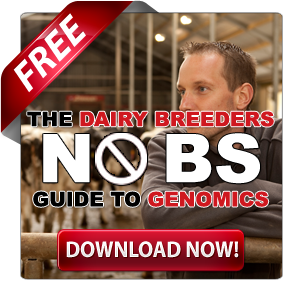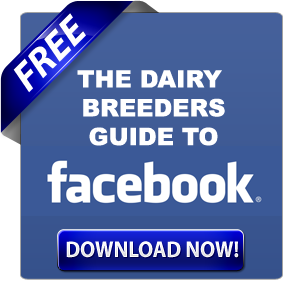Could gene editing transform dairy breeding? Will it replace or improve traditional ways? See what’s next for dairy farming.
Could gene editing mean the end of traditional dairy breeding? In a world where technology changes fast, how we’ve always bred dairy cows might soon be outdated. With new tools like CRISPR, gene editing is shaking up the farming world, suggesting a significant change that could forever alter how we produce dairy. These advances could achieve what used to take decades with traditional breeding, making us question the future of old methods. We are beginning a new era, and it’s time to look closely at how these changes could benefit the industry.
Unpacking the Genetic Revolution: The CRISPR-Cas9 Phenomenon
Gene editing is a significant scientific advancement, allowing for precise gene changes. Tools like CRISPR-Cas9 make this possible. But what makes it so unique, and why is it a significant breakthrough?
How CRISPR-Cas9 Works

CRISPR-Cas9 works like tiny, precise scissors. Scientists use it to target specific genes and cut them accurately. It has two main parts: the CRISPR part, which is like a map guiding where to cut, and the Cas9 enzyme that does the cutting.
- Scientists create a CRISPR guide matching the gene they want to change.
- This guide leads Cas9 to the exact spot in the DNA.
- Cas9 then cuts the DNA at that spot.
- The cell naturally repairs the DNA, allowing for changes like adding or removing genes.
This precise method ensures that only the right spot is changed, reducing the risk of mistakes. CRISPR-Cas9 is also faster and cheaper than older methods, which makes it stand out.
Gene Editing vs. Adding Foreign DNA
Unlike methods that add genes from one species to another, gene editing mainly changes genes already in the animal. Adding foreign genes can create new traits and face significant ethical and environmental issues.
Gene editing focuses on tweaking genes in the same species. This method can boost positive traits or remove bad ones without mixing genes from different species. This makes gene editing more accepted by laws and the public, avoiding many issues faced by adding foreign DNA.
Why It Matters
Gene editing changes the game for several reasons:
- Accuracy: Can target the exact genes for change, unlike random changes in breeding or adding foreign DNA.
- Speed: Changes that took years through breeding can now happen quickly.
- Cost: It’s cheaper and saves time compared to older ways.
- Ethics: Fewer concerns about mixing species helps solve ethical issues.
Overall, gene editing with CRISPR-Cas9 opens new, exciting possibilities in dairy breeding and other fields, balancing scientific goals and public opinions.
The Age-Old Method: Is Traditional Breeding Running Out of Steam?
Traditional dairy breeding has been the primary way farmers improve their cattle. It involves picking the best animals over generations to get better traits, like milk production, fertility, and staying healthy. Farmers look at family history and visible traits to choose which animals to breed together. The animals with the best scores are used to form the next generation.
Traditional breeding is a very slow process. Trait improvements, like milk yield, happen gradually in each generation. Adding one good trait to the herd can take 15 to 20 years. This happens because it depends on how genes mix naturally, which makes predicting results hard.
The main problem with traditional breeding is that it depends on natural gene changes and takes a long time because cows have long lifespans. It’s slow, and the data about cow traits isn’t sometimes precise. Also, traditional breeding can accidentally reduce the variety of genes, using a limited number of animals to obtain certain traits. This could lead to inbreeding, causing unwanted traits or making the herd less adaptable.
Even with these challenges, traditional breeding has helped improve dairy cattle genetics. It shows the value of patience and careful planning in farming. But now, with new technology like gene editing, farmers might find faster, more focused ways to improve cattle without the downsides of traditional breeding.
Beyond the Horizon: Unleashing the Precision and Power of Gene Editing in Dairy Cattle
Gene editing is very promising for dairy cows because it’s precise and fast. Using tools like CRISPR-Cas9, scientists can accurately change a cow’s genes. This helps improve good traits in cows without adding foreign genes, which reduces the risk of problems.
Gene editing works much faster than old breeding methods, which can take many generations to see changes. This fast work can quickly improve dairy cow genetics.
Gene editing can improve important traits like milk production, helping farms become more efficient and profitable. It can also make cows more resistant to diseases, saving money and keeping them healthier.
Additionally, gene editing could help eliminate painful practices like dehorning by changing the genes responsible for these traits. This would lead to more humane and sustainable farming.
In short, gene editing in dairy cows means making precise and fast changes for better milk production, disease resistance, and animal welfare. It complements old breeding but does it much more effectively.
The Future is Now: Accelerating Dairy Breeding with Gene Editing
Gene editing offers many advantages over traditional breeding, especially with tools like CRISPR-Cas9. It lets us make changes at specific spots in the DNA so we can add the traits we want without random chance. This means we can make genetic improvements much faster. What used to take decades with traditional breeding can now be done with gene editing in just a few years.
Gene editing isn’t just about choosing specific traits. It can also fix complicated traits that involve multiple genes, like disease resistance and adapting to the environment. For instance, scientists have used gene editing to help protect animals from diseases like Bovine Viral Diarrhea Virus (BVDV), which shows how it can improve animal health and productivity. However, there’s a worry about making mistakes in other parts of the DNA, so research is needed to be more precise and reduce the risks.
Looking deeper into these advancements, we see that traditional methods have limits. Take OCD Thorson Ripcord-ET, the current #1 NMS in the world at 1485. Compare this to a “Supercow,” which could have an NM$ of $6745 using the best genetics in Holsteins. The genetic gain of traditional breeding is about $94 NM annually. It would take about 55 years to reach the level of a “Supercow.” This shows the power of gene editing, which can skip over the limits of natural breeding. However, challenges like changes in efficiency remain, meaning we need to keep improving gene editing technologies to make them reliable and effective in changing the future of dairy cattle genetics.
Gene Editing: A Brave New World or a Pandora’s Box?
The argument about using gene editing in farm animals raises many ethical worries, especially about animal welfare. Gene editing aims to make animals healthier by giving them traits that fight diseases or avoid painful things like dehorning. But there’s still a question about what might happen in the long run. Could these genetic changes accidentally create new health issues that harm the animals’ quality of life?
Aside from welfare, there’s the issue of animal dignity. Ethical arguments ask if it’s right to change the genetic makeup of living beings for human gain. Is there a big difference between selective breeding, which is very old, and cutting genes to fit a plan? Do these actions harm the natural dignity of animals by turning them into tools for production?
The possible environmental effects are also a concern. If genetically edited animals somehow join nature, it might surprisingly change ecosystems. Changes in one species could affect the whole food chain, impacting biodiversity and natural habitats. It’s crucial to balance promoting farming improvements with environmental protection and ethical standards.
Regulatory Labyrinth: Navigating Global Standards for Gene-Edited Animals
The rules for gene-edited animals vary worldwide, like a patchwork quilt of different pieces. Each country or region has its way of evaluating this technology based on its culture and beliefs. These differences can affect how quickly these technologies are adopted and change how they are used in global markets.
- United States: The United States is generally open to gene editing, with the Food and Drug Administration (FDA) leading the way. The FDA treats gene-edited animals like regular farm animals as long as the edits can happen naturally or through regular breeding. However, the FDA still requires careful checks to ensure they are safe for animals and people. This approach encourages new ideas but raises questions about managing them in the long run.
- European Union: The European Union (EU) has stricter rules, treating gene-edited organisms like GMOs (genetically modified organisms). These rules require detailed labeling and safety tests. This can make introducing gene-edited animals in their markets hard and might slow progress and competition. The EU wants to stay cautious about new genetic technology while ensuring public confidence.
- Japan: Japan’s rules are more flexible, and each case is examined individually. If a gene-edited animal doesn’t have DNA from other species, it might not be considered a GMO. This approach could avoid some strict regulations, making it easier to approve. However, it must carefully maintain consistent rules and consumer trust.
All these rules aim to ensure the safety of gene-edited animals without stopping innovation. However, challenges like off-target effects, where unintended changes occur, add complexity to safety checks. Bringing more uniformity to these rules globally is essential. It can help with transparency, market access, and broader acceptance of these new technologies.
While these different approaches show varying ideas, they all focus on a shared goal: protecting public and environmental health while keeping pace with advancements in animal genetics. The conversation continues as experts and policymakers work together to find a balance in this new era.
Cautious Optimism: Charting the Future of Dairy Breeding with Gene Editing
The dairy industry hopes gene editing will change the game. The industry sees many benefits, such as higher productivity, better animal welfare, and more sustainable farming. Gene editing allows us to add specific traits quickly, speeding up breeding progress that usually takes decades.
But, costs are a significant consideration. Starting with gene editing can be expensive. However, these costs should go down as more people use these technologies. Compared to traditional breeding, which can be slow and pricey, gene editing might be cheaper to improve genetics in the long run.
The key issue is whether people accept gene-edited products. Some consumers hesitate, but explaining and educating the public can help change their opinions. The dairy industry needs to talk to consumers and show how safe and beneficial these advancements are in building trust.
Gene editing will likely add to, not replace, traditional breeding methods. Gene editing is precise and efficient, but traditional methods still have a place, especially where gene editing faces limits or regulations. Together, these two methods could work well, using each of their strengths to improve the genetic quality of dairy cattle.
Pioneers of Progress: Gene Editing’s Tangible Impact on Dairy Cattle
The reality of gene editing in dairy cattle is not just science fiction. It’s a growing field that is making real progress. A good example is the work of Recombinetics, a biotech company that is doing extraordinary things. Working with the University of Minnesota, they’ve achieved big wins in breeding polled cattle. Using gene editing to remove the horned trait, they aim to improve animal welfare by eliminating the painful process of dehorning, a significant concern for dairy farmers.
Similarly, Acceligen, another Recombinetics branch, shows how gene editing can work. Acceligen edits cattle genes to give traits like heat tolerance, which helps them deal with climate challenges. These edited cattle can stay productive in hot weather, proving how helpful gene editing can be in keeping livestock healthy.
The Roslin Institute in Scotland is another place that is doing great work on gene editing. Famous for cloning Dolly the sheep, it now uses CRISPR technology to boost disease resistance in dairy cattle. Its work shows that gene editing can increase productivity and improve health by stopping diseases from spreading.
These examples prove that gene editing is more than a theory. It’s laying a strong foundation for a future where traditional breeding and new genetic technologies work together. As we see these changes, it’s clear that the leaders in this field are not just pushing technical limits but also focusing on making gene-edited cattle a reality in ethical and practical ways.
The Consumer Conundrum: Navigating the Perceptions and Pitfalls of Gene-Edited Dairy
People have mixed opinions about products made from gene-edited animals, including dairy, which makes it hard for everyone to accept them. A survey by Pew Research in 2023 found that about 50% of Americans think using gene editing on animals is a harmful use of technology, while only about 31% see it in a positive light [Pew Research 2023]. The public’s worries make sense because there’s been much pushback against GMO products before. A 2023 study by the International Food Information Council (IFIC) showed that 62% of people would not feel safe with gene-edited foods or animal products [IFIC Study 2023].
The UK’s reaction to Bovaer, a new feed additive that reduces methane emissions in dairy cattle, shows how skeptical people are towards new biotechnologies in farming. Even though Bovaer is praised for possibly making dairy farming more sustainable, it faces questions about food safety and its long-term impact on health and the environment. These fears are similar to gene-edited products, raising doubts about whether these advancements care more about profits than health. Critics worry about how little information is shared with consumers, arguing that they lack enough information to make informed decisions.
All these debates focus on one thing: trust. Whether about feeds reducing methane or gene-editing cattle, technology will only move forward with public trust. Gaining this trust requires more than just showing the benefits: talking to the public, being transparent, and proving that safety checks are strict. The agricultural industry must listen to people’s worries and address them seriously, finding ways for new tech to exist alongside public approval.
Despite these concerns, there’s hope. Younger people, usually open to new technology, might change how people see gene editing. However, building trust through clear information, labeling, and proving safety over time is essential for gene editing to succeed in stores. Marketing challenges continue, like educating people about the benefits of gene editing and showing how it’s different from GMOs. To change the negative “Frankenfood” image, industry leaders, regulators, and scientists need to work together.
The Bottom Line
In conclusion, gene editing is a big deal for the future of dairy breeding. It’s precise and fast, a massive step forward from old methods. Traditional methods have remained for good reasons: They’ve created strong systems for animal production and diversity. Mixing new technology with old knowledge seems not only wise but also necessary.
Will gene editing start a new phase that renders old breeding methods useless, or will it just become part of what we already do in dairy farming? This critical question challenges us to think beyond technology and envision a future where new ideas work hand in hand with our values and ethics.
As people involved in this story, we should all consider and discuss what gene editing means for farming. Having an open discussion about its ethical and technical sides isn’t just a good idea—it’s essential. How will these new tools change our dairy world? Let’s discuss and find a way to balance progress with tradition together.
Key Takeaways:
- Gene editing, particularly CRISPR-Cas9, offers precision and rapid genetic improvements in dairy cattle, potentially outperforming traditional breeding methods.
- While technological advancements are promising, concerns about off-target effects and efficiency variations warrant careful monitoring and further research.
- Ethical considerations encompass animal welfare, dignity, and potential ecological impacts of genetically edited livestock.
- Regulatory approaches are currently diverse, with some regions imposing strict rules similar to those for GMOs. This impacts global uniformity in gene-editing practices.
- The dairy industry anticipates benefits from gene editing, yet consumer acceptance and cost considerations remain crucial hurdles.
- Gene editing is likely to complement, rather than replace, traditional methods, creating a synergistic breeding strategy.
- Maintaining genetic diversity while achieving targeted improvements should be a focal point in the future of dairy breeding.
Summary:
Imagine a world where dairy cows, designed for maximum efficiency and health, are no longer just a result of natural selection and traditional breeding but are products of precise genetic modifications. As the science of gene editing rapidly progresses, breeders utilize advanced tools like CRISPR-Cas9 to enhance traits, transforming the dairy industry’s foundational processes. This raises profound questions about the future: could this spell the end for traditional dairy breeding practices as we’ve known them? With the ability to swiftly introduce desired genetic attributes and eradicate undesirable ones, gene editing stands at the forefront of modern science. This method is faster, cheaper than older methods, and more accepted by laws and the public. However, challenges like efficiency changes remain, requiring continuous improvement of gene editing technologies. Ethical concerns, including animal welfare, dignity, environmental effects, and varying global regulatory standards, suggest gene editing will be a significant step for the future of dairy breeding. The central question remains: will it render old breeding methods obsolete or integrate into existing practices?
Learn more:
- Unlock the Secret to Doubling Your Dairy Herd’s Rate of Genetic Gain: The Power of Cloning Revealed!
- Leveraging Herd Genotyping & Sexed Semen: A Game-Changer in Livestock Industry
- Revolutionizing Dairy Farming: Reducing Methane Emissions via Genetic Selection in Cattle
 Join the Revolution!
Join the Revolution!
Bullvine Daily is your essential e-zine for staying ahead in the dairy industry. With over 30,000 subscribers, we bring you the week’s top news, helping you manage tasks efficiently. Stay informed about milk production, tech adoption, and more, so you can concentrate on your dairy operations.







 Join the Revolution!
Join the Revolution!




